Only a section remains of the vast landscaped palace which once stood in the middle of the ancient city, its walls decorated with gold-leaf, ivory and gemstones, among gardens boasting vineyards, pastures, woods and an artificial lake.
Treasures looted in Eastern cities were displayed in the complex of porticoes and rooms built by Nero after the great fire of Rome in 64 A.D. had razed the aristocratic dwellings in the area.
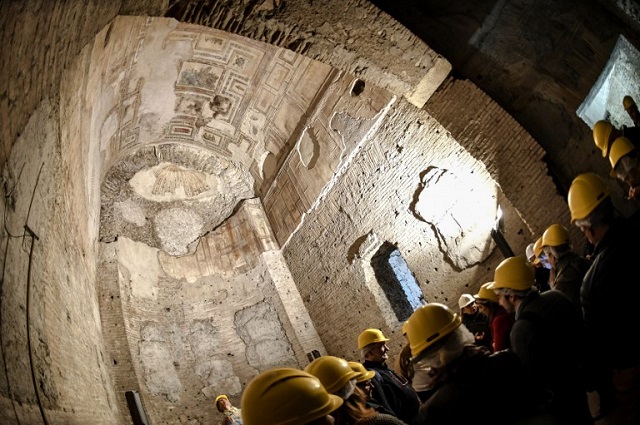
Photo: Andreas Solaro/AFP
On his death, Nero's successors did not take long to scrap the palace, building the Colosseum for gladiator battles on his ornamental lake in 70 AD, filling the Golden House with earth, and erecting the Baths of Trajan on top in 109 AD.
The complex was lost for centuries, before being rediscovered in the Renaissance by accident and becoming a must-see for artists from Raphael to Michelangelo, who were lowered into one of the rooms by a window in the ceiling to study the frescoes by candlelight.
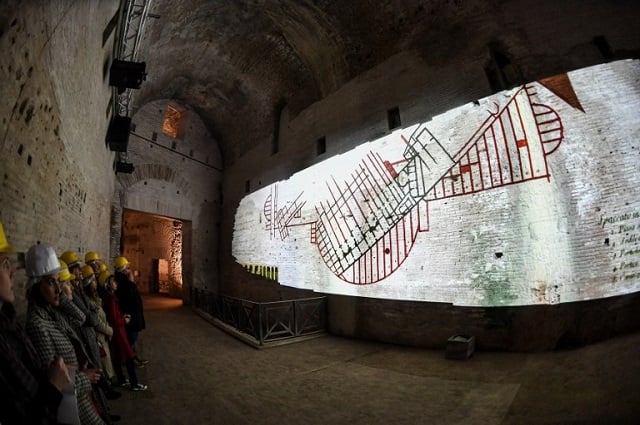
Photo: Andreas Solaro/AFP
Strapping on virtual reality headsets, visitors can now see that room as it was when it was filled near to the roof with earth and as it would have looked in Nero's time, its marble walls gleaming in the sunlight.
'Glimmer like jewels'
“It's called the Domus Aurea (Golden House) not only for the gold leaf in the frescoes but because it was designed so that the rays of the sun would bounce off the marble and waterfalls to glimmer like jewels,” architect Gabriella Strano said on Wednesday.
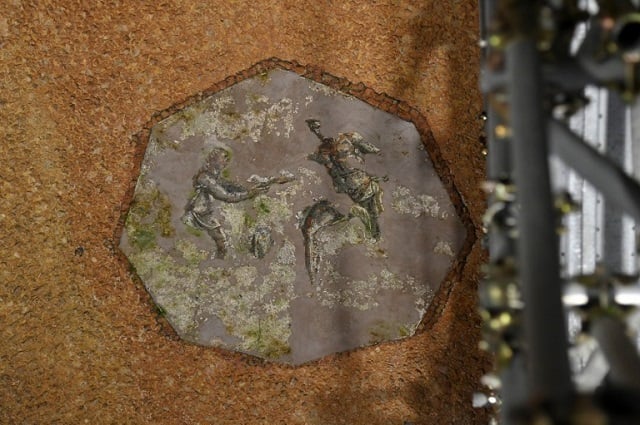
Photo: Andreas Solaro/AFP
The viewer steps, virtually, past the columns and into the garden, crossing lavender beds and the lawn to look out across Rome.
Visitors, who must book in advance to join groups of up to 25 people, can also look behind and above them with the 360 degree technology viewers.
“There were no kitchens here, or bathrooms or heating. The rooms were all open onto the gardens or the view of the lake. It was probably a place to take walks and relax,” said architect Elisabetta Segala.
Photo: Andreas Solaro/AFP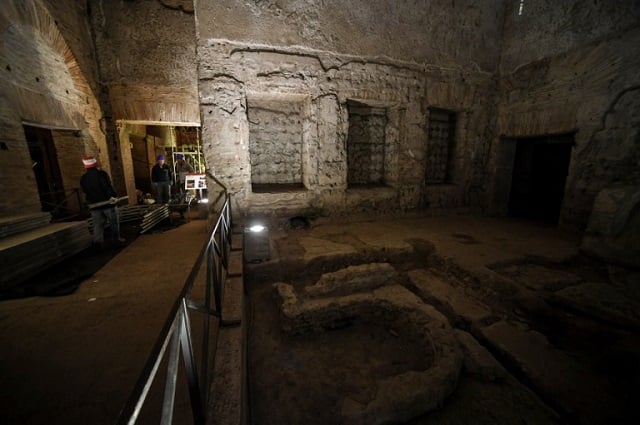 Photo: Andreas Solaro/AFP
Photo: Andreas Solaro/AFP
The complex officially opened to tourists in 1999, but was forced to close again when water damage lead to partial roof collapses.
The fault lay with the public gardens on top of the buried palace, and in 2010 it was decided the area would have to be redesigned.
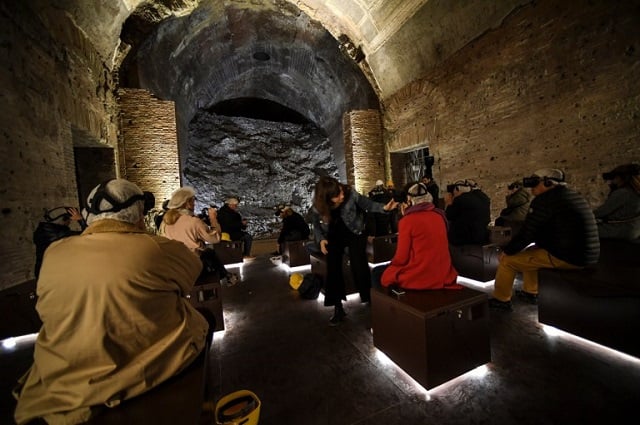
Photo: Andreas Solaro/AFP
Roman garden
Not only is the garden soil four-metres thick in parts and porous – weighing 30 percent more in heavy rains – but oaks and pines have stretched roots down over 25 metres to feed on the mineral salts in the mortar between the ancient bricks below, weakening the structure.
“We need to treat the frescoes to stop them going green, but as even the smallest intervention removes a layer of the original work we are first resolving the problem with the gardens before doing a final restoration,” Strano said.
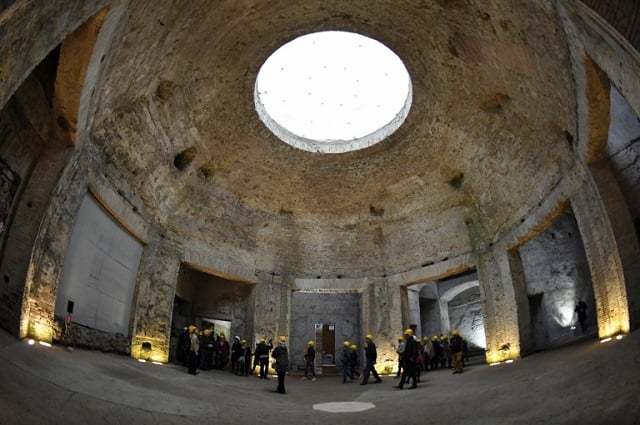
Photo: Andreas Solaro/AFP
Part of the new tour shows visitors how architects and archaeologists plan to save the complex – if funds can be found.
The government has so far stumped up 13 million euros ($14 million) of the 31 million needed to shore up the walls and transform the land above.
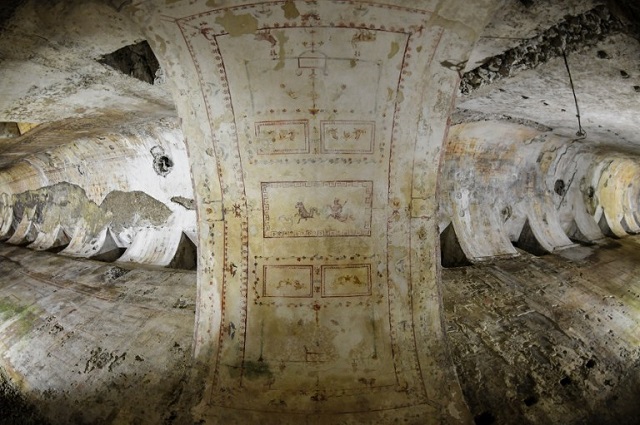
Photo: Andreas Solaro/AFP
Fifty trees will be uprooted, with smaller potted fruit and olive trees put in their place. The flower beds, which will echo the layout of the palace and baths below, will feature plants grown in Roman times, from rosemary to irises.
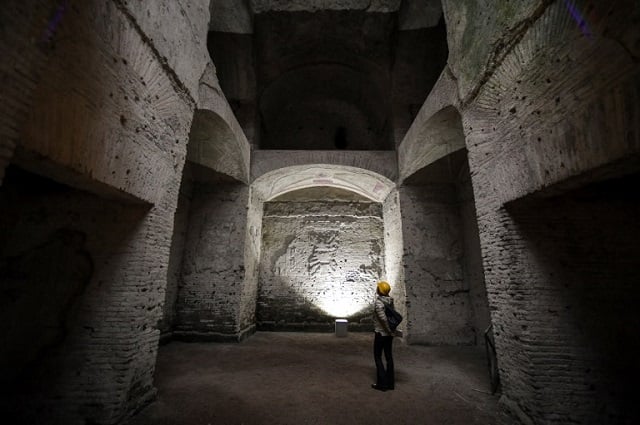
Photo: Andreas Solaro/AFP
The beds will be shallow and placed over a system of thermal insulation and drainage which will protect the frescoed rooms below by maintaining the climate underground at exactly 16 degrees Centigrade and the 90 percent humidity to which it has long been acclimatized.
Italy has appealed for private sponsors to help with the restoration work.
By Ella Ide


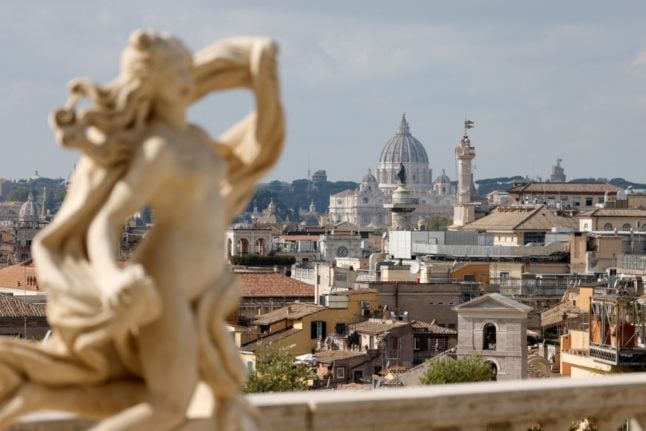
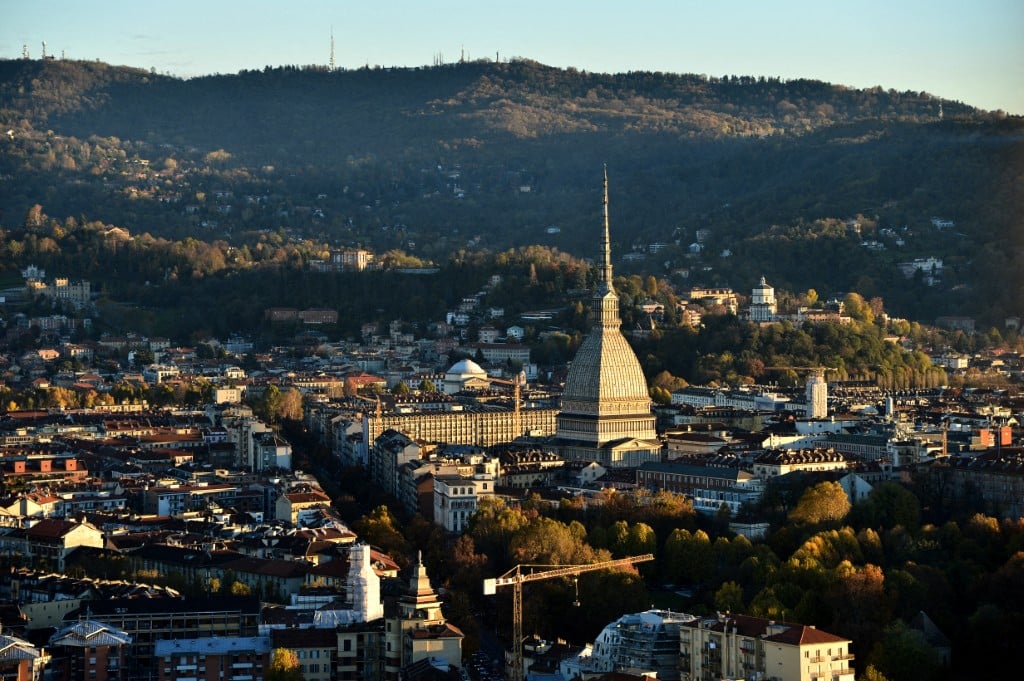
 Please whitelist us to continue reading.
Please whitelist us to continue reading.
Member comments